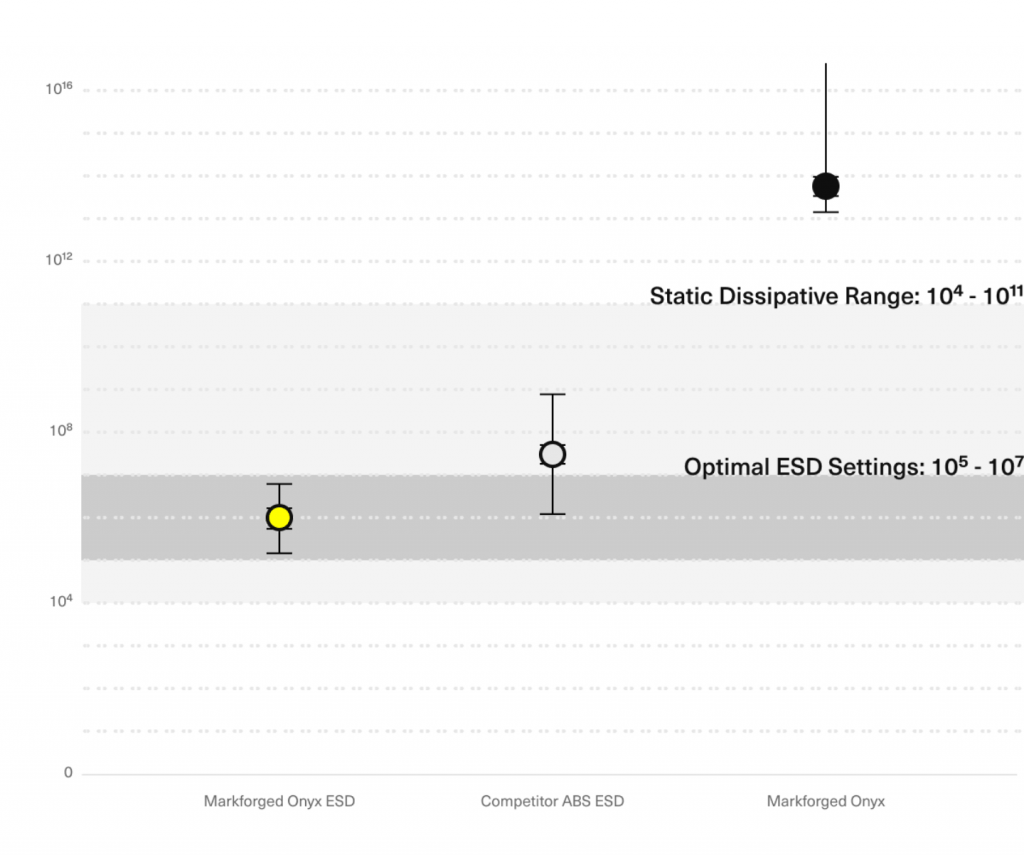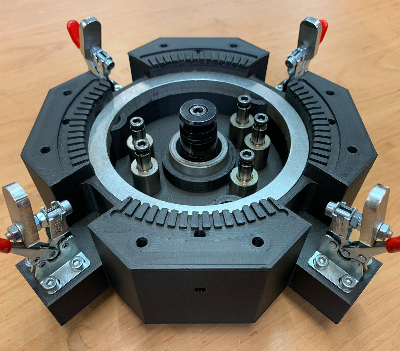Onyx ESD
What is Onyx ESD?
Onyx ESD is the most advanced polymer we’ve ever developed. It’s precision-engineered to possess an extremely tight range of surface resistance — meeting ESD-safe requirements of the most stringent manufacturers — while offering the same industry leading benefits that Onyx offers. In fact, it’s actually stronger and stiffer than Onyx with similarly impeccable surface finish, making it the go-to material for advanced applications.
When should I 3D print with Onyx ESD?
Onyx ESD is ideal for strong, yet lightweight and static dissipative components.
Surface Resistance 105-107Ω

Flexural Strength 83 MPa

Request a demo!
Feel the strength of continuous fiber for yourself.

Learn more about 3D printing continuous fibres!
Which continuous fibre is suitable for which applications? How do I design correctly for filament 3D printing? What do users say and where can I find more information? – This is the right place for you! We listed some information leading you directly to the matching answers.






